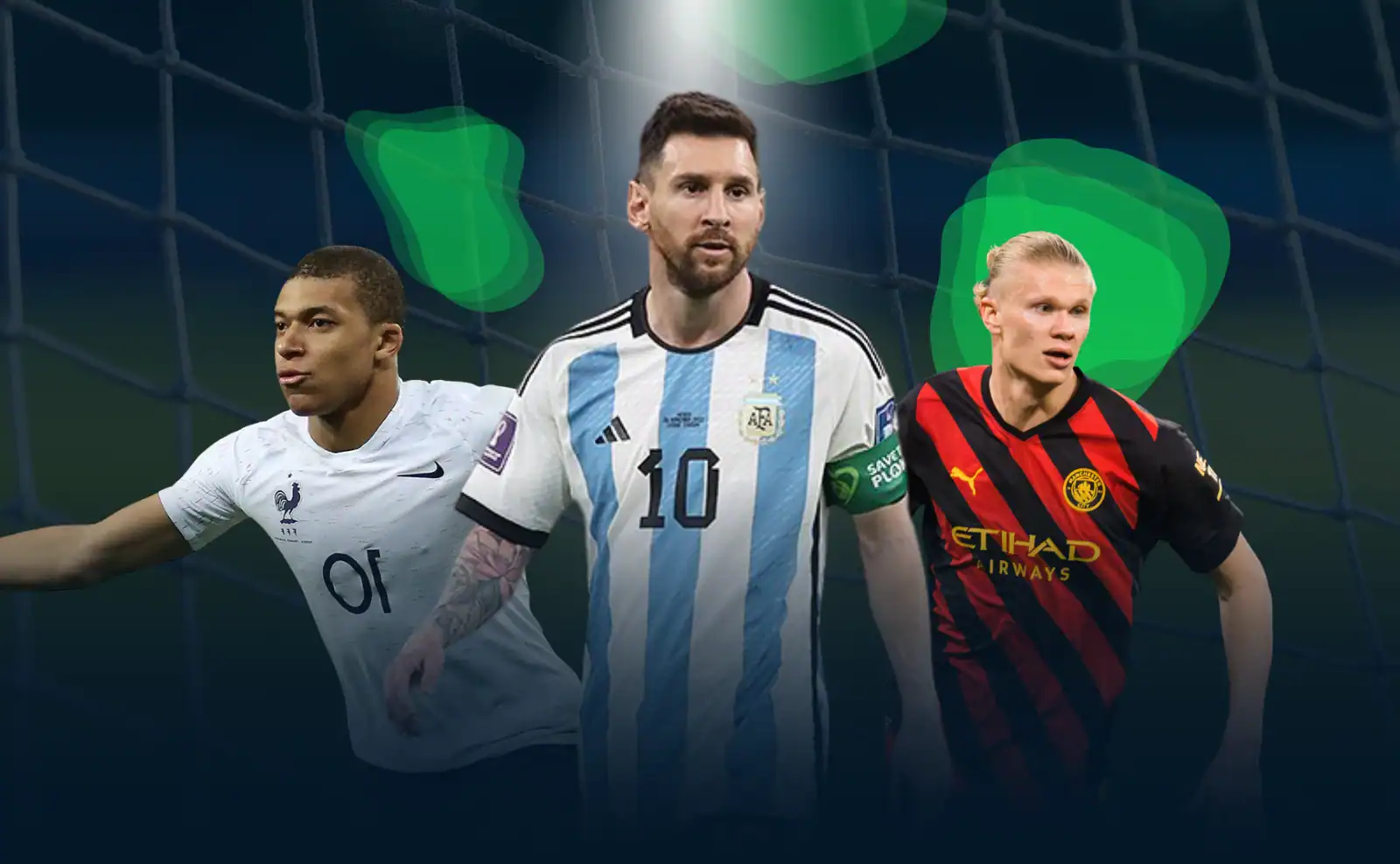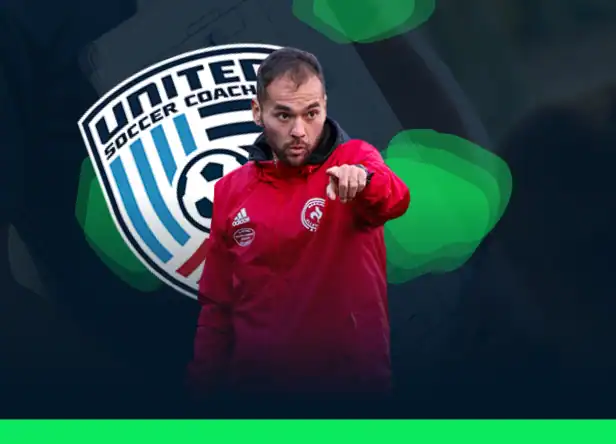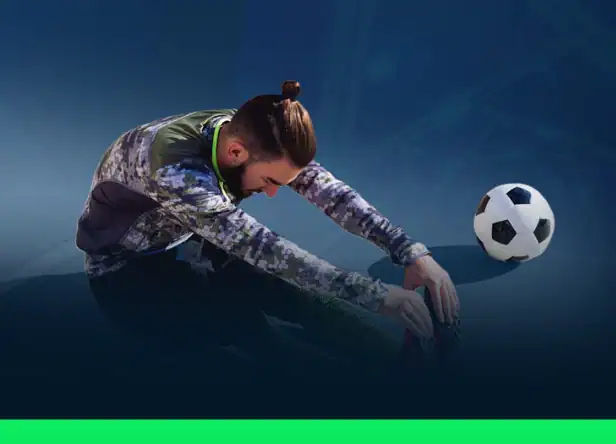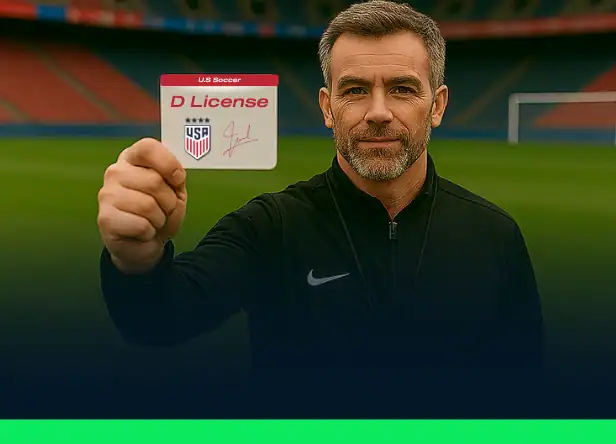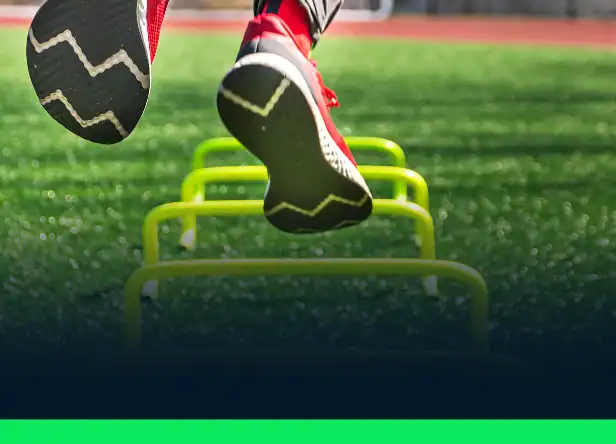The forward is the heartbeat of any attack, combining clinical finishing, creative vision, tactical intelligence, and relentless energy to dismantle defenses and inspire teammates to victory.
What Is the Role of a Forward? What Does a Stricker Do?
As you know, there are many positions in soccer, and the forward’s main role is to score goals and create offensive opportunities for the team. To do this, a forward must have excellent positioning sense and strong finishing ability. They must also be able to read the game and position themselves properly to receive decisive passes.
The main tasks of a forward include:
- Scoring goals: This is obviously the primary objective. Every goal can change the course of the match, and the forward is the player best placed to make that happen.
- Creating chances: In addition to scoring, a good forward must also be able to create opportunities for teammates. Depending on their positioning and tactical role defined by the coach, a forward may sometimes be more useful as a chance creator than as a scorer.
- Defensive pressing: Forwards often participate in pressing the opponent’s defense to recover the ball quickly. This is especially present in positional play systems.
- Leadership and mentality: Forwards can also act as leaders. Determination, self-confidence, and the ability to stay calm under pressure are essential qualities. A forward should inspire teammates through a positive attitude and strong work ethic.
“Performing well isn’t just about scoring. It’s also about knowing how to move effectively.” – Robert Lewandowski
A fully developed forward blends technical mastery, astute tactical awareness, athletic explosiveness, and unwavering mental fortitude, adapting seamlessly to any system or role the coach requires.
Who Are the Best Forwards in MLS? Top Forwards in Major League Soccer (2024/25)
Here are the top-performing forwards in Major League Soccer for the 2024/2025 season, highlighting the leaders in both finishing and chance creation based on the latest available data.
Top 5 MLS Forwards in Finishing (2024/2025 Season)
| Top 5 Forwards in Finishing MLS 2024/2025 | Age | Goals (Total) | Club |
|---|---|---|---|
| Lionel Messi | 36 | 19 | Inter Miami CF |
| Sam Surridge | 26 | 18 | Nashville SC |
| Evander | 24 | 16 | FC Cincinnati |
| Eric Maxim Choupo-Moting | 33 | 15 | New York Red Bulls |
| Hugo Cuypers | 28 | 15 | Chicago Fire |
Top 5 MLS Forwards in Chance Creation (2024/2025 Season)
| Top 5 Forwards in Chance Creation MLS 2024/2025 | Age | Key Passes per 90 min | Expected Assists per 90 min | Club |
|---|---|---|---|---|
| Anders Dreyer | 28 | 1.8 | 0.35 | San Diego FC |
| Martín Ojeda | 28 | 1.7 | 0.33 | Orlando City SC |
| Philip Zinckernagel | 29 | 1.6 | 0.30 | Chicago Fire FC |
| Pep Biel | 28 | 1.5 | 0.28 | Charlotte FC |
| Cristian Espinoza | 25 | 1.4 | 0.26 | San Jose Earthquakes |
Who Are the Best Forwards in the World? World’s Elite Forwards
Evaluating global talent requires balancing scoring output with creative influence. Below are the leading forwards from Europe’s top five leagues during the 2023/24 season.
Top 5 Forwards in Finishing (2023/2024 Big 5 Leagues)
| Player | Age | Goals / 90min | Conversion Rate | Club |
|---|---|---|---|---|
| Harry Kane | 30 | 1.57 | 37% | Bayern Munich |
| Jude Bellingham* | 20 | 0.98 | 37% | Real Madrid |
| Lautaro Martínez | 26 | 1.11 | 33% | Inter Milan |
| Olivier Giroud | 37 | 0.85 | 41% | AC Milan |
| Erling Haaland | 23 | 1.14 | 29% | Manchester City |
| Kylian Mbappé | 24 | 1.30 | 26% | PSG |
*Bellingham often operates in advanced roles despite his midfield designation.
Top 5 Forwards in Chance Creation (2023/2024 Big 5 Leagues)
| Player | Age | Key Passes / 90min | Expected Assists / 90min | Club |
|---|---|---|---|---|
| Ousmane Dembélé | 26 | 2.45 | 0.27 | PSG |
| Leroy Sané | 27 | 1.62 | 0.46 | Bayern Munich |
| Nico Williams | 21 | 1.54 | 0.41 | Athletic Bilbao |
| Kylian Mbappé | 24 | 1.95 | 0.20 | PSG |
| Moussa Diaby* | 24 | 1.50 | 0.31 | Aston Villa |
| Mohamed Salah | 31 | 1.41 | 0.35 | Liverpool |
*Moussa Diaby also features in this group when deployed in forward areas.
These forwards are recognized not only for their ability to score but also for their overall influence on the game and their capacity to create opportunities for teammates.
The Different Types of Forwards
Forwards tailor their game to different tactical systems by adopting one of four specialized roles:
Center Forward
Also called the number 9, the center forward is positioned at the heart of the attack. They are often the focal point and primarily responsible for scoring.

Qualities:
- Strong finishing ability.
- Aerial presence for headers.
- Ability to play with their back to goal and shield the ball.
Examples: Robert Lewandowski, Harry Kane.
Winger
The winger plays wide (right or left) and operates the flanks, and is tasked with dribbling, creating chances, and crossing into the box.
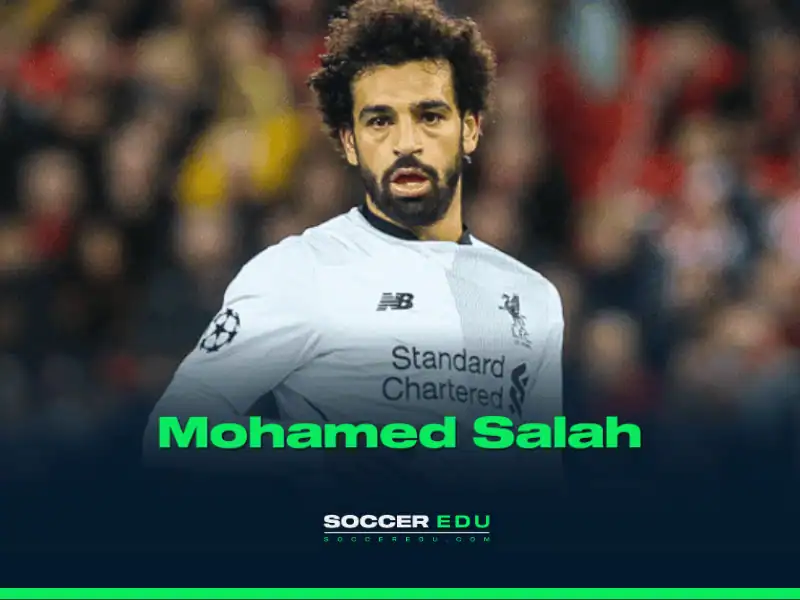
Qualities:
- Speed and agility.
- Dribbling ability.
- Accurate crossing.
Examples: Mohamed Salah, Ousmane Dembélé.
False Nine
The false nine drops deeper between midfield and defense to disrupt defensive lines.
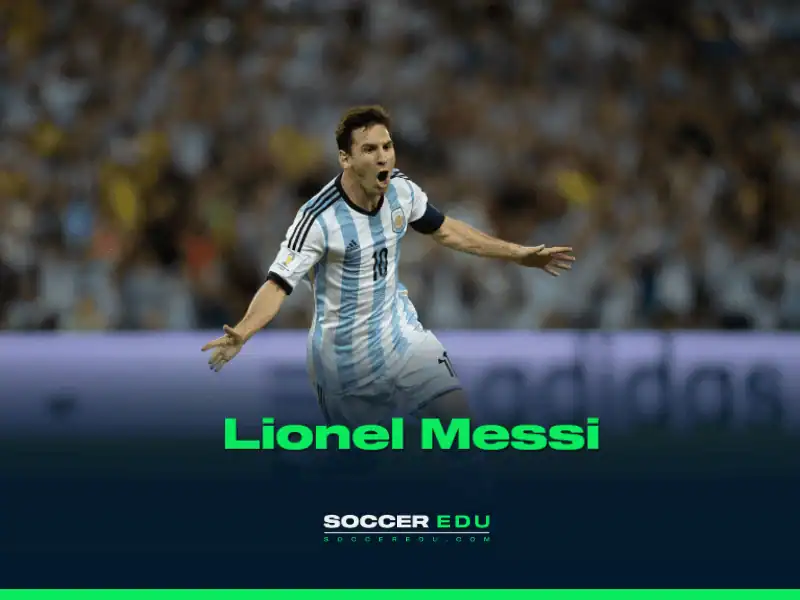
Qualities:
- Excellent vision.
- Playmaking ability.
- Versatility in both scoring and assisting.
Examples: Lionel Messi, Roberto Firmino.
Second Forward
The second forward plays just behind the center forward, often in a supporting role.
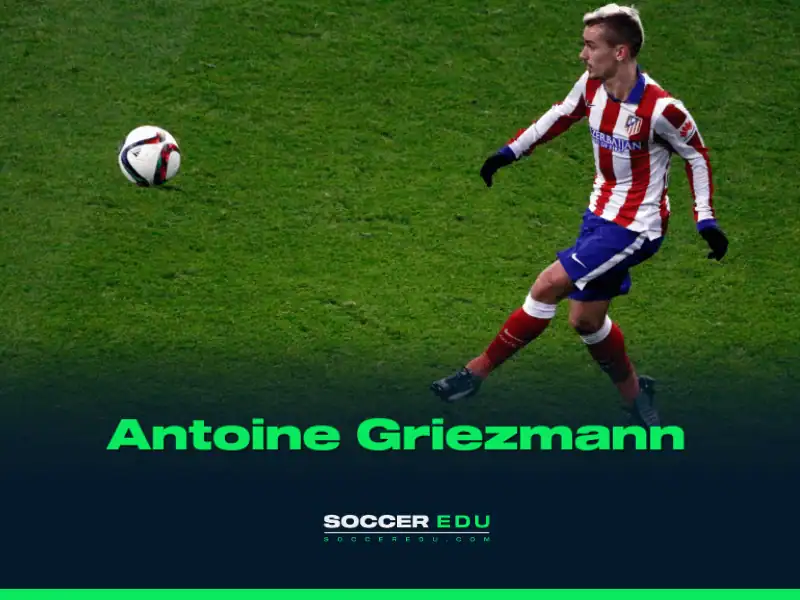
Qualities:
- Strong understanding of the game.
- Ability to deliver key passes.
- Versatility to both score and assist.
Examples: Antoine Griezmann, Paulo Dybala.
How to Become a Better Forward? Pathway to Becoming an Elite Forward
Mastering the forward position demands a holistic development plan covering tactical, technical, physical, nutritional, and mental facets.
1. Tactical Awareness & Game Analysis
- Video Analysis: Study movement patterns of top forwards (Kane, Mbappé, Haaland, Aubameyang). Focus on runs behind defenses, support angles, and situational decision-making.
- Shadow Play Sessions: Recreate attacking scenarios without opposition, emphasizing timing of runs and spatial occupation.
2. Physical Conditioning
- Endurance Training: Interval running, small-sided games, and high-intensity tempo drills to sustain pressing efforts across 90 minutes.
- Speed & Agility Work: Plyometrics, sprint ladders, and shuttle runs to enhance acceleration bursts and change-of-direction speed.
- Strength & Power: Olympic lifts, weighted lunges, and core stability exercises to withstand physical duels and increase shot power.
3. Technical Mastery
- Finishing Circuits: Rotate through stations featuring one-touch finishes, volleys, volleys off crosses, and finishing from different angles.
- Dribbling Mazes: Cones arranged in varied patterns to simulate tight spaces; incorporate feints, step-overs, and combination moves.
- Aerial Practice: Repeated cross-and-finish drills focusing on timing, jump technique, and directing headers into targeted zones.
4. Nutritional Strategies
- Balanced Diet: Emphasize lean proteins, complex carbohydrates, and healthy fats to fuel high-intensity outputs and accelerate recovery.
- Hydration Protocols: Regular fluid intake before, during, and after sessions to maintain performance and prevent cramps.
- Supplementation: Under expert guidance, use sports-specific supplements such as whey protein, BCAAs, and omega-3s to support muscle repair and inflammation control.
5. Mental Resilience & Leadership
- Pressure Drills: Simulate high-stakes scenarios like penalty shoot-outs or time-pressured finishing tasks to build composure.
- Visualization Techniques: Mental rehearsal of scoring sequences, positive affirmations, and focused breathing exercises to manage stress.
- Team Communication: Develop on-field leadership by directing pressing triggers and coordinating positional rotations with midfielders and full-backs.
Essential Training Drills for Forwards
To become as effective as the top forwards mentioned earlier, consistent and targeted training is essential. Here are three key exercises:
Drill 1: Finishing Under Pressure
Objective: Replicate match-pace decision-making with active defender engagement.
- Setup: Cones outline the penalty area. A defender begins 5 yards from the forward.
- Execution: A playmaker feeds passes; the forward must control, pivot, and shoot under defender pressure. Rotate performers to simulate fatigue.
Drill 2: Dribble-and-Shoot Circuit
Objective: Combine high-tempo dribbling with clinical finishing.
- Setup: Cones in zigzag and straight routes leading to a shooting zone at 12 yards.
- Execution: Forward dribbles through the pattern at full speed, then transitions immediately into a shot on goal. Emphasize explosive turns and accurate placement.
Drill 3: Aerial Target Practice
Objective: Hone timing, jump technique, and directional heading.
- Setup: Wide crosses delivered from both flanks, alternating in-swinging and out-swinging deliveries.
- Execution: Forward times run to meet each cross, aiming at marked target areas in the net. Focus on neck strength and body alignment.
Drill 4: Combination Play Small-Sided Games
Objective: Improve link-up play, spatial awareness, and quick decision-making.
- Setup: 6v6 or 7v7 grid with target goals.
- Execution: Forwards must combine with midfielders via wall passes, lay-offs, and third-man runs to create scoring chances. Encourage rotation of positions and dynamic movement.
Common Pitfalls and How to Overcome Them
- Predictable Movement: Vary run depths and angles to make it harder for defenders to mark you. Incorporate surprise diagonal runs behind the back line.
- Rushed Decision-Making: Practice composure drills requiring a brief first touch pause before shooting. This builds controlled finishing under pressure.
- Physical Neglect: Balance gym work with pitch sessions to avoid overloading and maintain sharpness. Coordinate with sports science staff for periodized plans.
- Mental Lapses: Use mindfulness and pre-match routines to focus only on actionable elements. Debrief setbacks constructively rather than dwelling on missed chances.
Conclusion
The forward position in soccer is a demanding fusion of clinical finishing, creative vision, tactical nous, physical dynamism, and mental steel. Whether as a central striker, wide winger, false nine, or support attacker, excelling in this role requires:
- Tactical Intelligence: Mastery of positioning, movement patterns, and pressing triggers.
- Technical Excellence: Proficiency in shooting, dribbling, aerial duels, and close control.
- Physical Preparedness: High-endurance conditioning, explosive speed, and strength.
- Nutritional Discipline: Targeted fueling and recovery strategies.
- Mental Fortitude: Confidence under pressure, resilience after setbacks, and communicative leadership.
By integrating comprehensive game analysis, tailored training drills, sports-science-backed conditioning, and robust mental preparation, aspiring forwards can elevate their performance and transform into match-winners capable of shaping the outcome of every game. Embrace continuous learning, adapt to evolving tactical demands, and lead your team with unwavering ambition.

